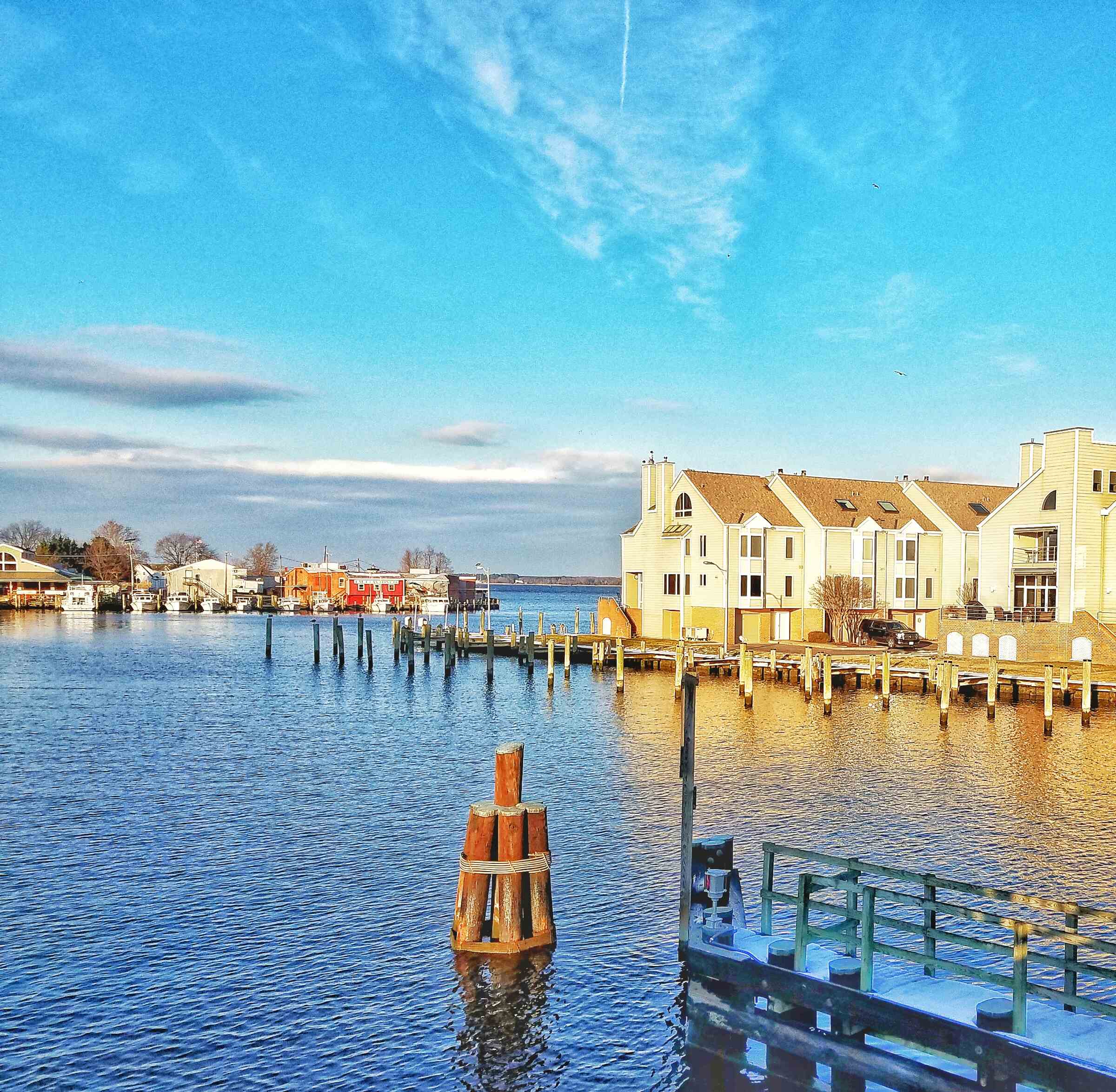Chesapeake Bay Oysters Wild Harvested or Farmed - Both are Delicious Choices to try on your next trip to the Eastern Shore of Maryland
The Eastern Shore of Maryland is a seafood lover's paradise where the Chesapeake Bay oyster takes center stage. Whether you're a fan of the wild harvested variety or prefer the unique flavors of farmed oysters, this region offers a gastronomic experience like no other. In this blog, we'll dive deep into the world of Chesapeake Bay oysters, exploring their historical population size, the difference between wild harvested and farmed oysters, and how the merroir of the bay influences their flavor. We'll also tantalize your taste buds with the best dishes and preparations to indulge in, and guide you to locate top restaurants and seafood markets where you can savor the finest Chesapeake Bay oysters. So, get ready for a culinary adventure that will leave you craving more of these delectable bivalves.
Understanding the Chesapeake Bay Oyster From Historical Population Size to Restoration Efforts
The Chesapeake Bay oyster is not only an iconic species in the region but also plays a vital role in the ecosystem and the local economy. These bivalves act as natural filter feeders, pumping water through their gills and trapping particles of food, nutrients, and contaminants in the process. Incredibly, a single oyster can filter more than 50 gallons of water in just one day. This filtration helps to keep the water clean and clear, benefiting underwater grasses and other aquatic life.
Oyster reefs also provide important habitat for a wide range of critters. As oysters grow, larvae settle on top of adults, forming layers of oysters that spread upward and outward. The countless nooks and crannies of these reefs serve as a safe haven for small fish and invertebrates seeking shelter, as well as a hunting ground for larger fish in search of food.
However, the Chesapeake Bay oyster population has suffered greatly due to over-harvesting, disease, pollution, and habitat loss. These factors have led to a severe decline in oyster populations, impacting both the ecosystem and the economy. The oyster industry, including the catch, sale, shucking, packing, and shipping of oysters, has historically contributed millions of dollars to the region's economy.
To address the decline in oyster populations, scientists and resource managers are working on various restoration efforts. These include managing harvests, establishing sanctuaries, overcoming disease effects, and restoring oyster reefs. Restoring oyster populations is vital for the health of the Chesapeake Bay ecosystem and for the livelihood of people in the region.
By understanding the importance of the Chesapeake Bay oyster and supporting restoration efforts, seafood lovers and guests visiting the Eastern Shore of Maryland can contribute to the preservation of this iconic species and the sustainability of the region's ecosystem.
Exploring the Difference Wild Harvested vs. Farmed Chesapeake Bay Oysters
The decline of oyster populations in many regions around the world is a cause for concern. However, there is one region that stands out as an exception to this trend - the Chesapeake Bay. In recent years, the Chesapeake Bay has experienced a remarkable resurgence in its oyster population. Maryland reported its best oyster harvest in three decades, with a significant increase in the number of oysters harvested. This resurgence is a testament to the efforts of conservationists and oyster farmers in the region.
Several factors have contributed to the success of the Chesapeake Bay oyster population. Improved state and federal management, along with the expansion of private hatchery operations, have played a crucial role. Additionally, efforts to clean up the Chesapeake Bay have created a more hospitable environment for oysters to thrive. The combination of these factors, along with favorable weather conditions and strong reproductive oyster classes, has led to the remarkable recovery of the Chesapeake Bay's oyster population.
What sets the Chesapeake Bay oyster apart is its resilience and fast growth. Unlike previous generations of Chesapeake oysters, this new super-oyster is resistant to diseases that have plagued the population in the past. It is also known for its excellent taste, making it a sought-after delicacy for seafood lovers.
While the current success of the Chesapeake Bay oyster population is promising, the future is uncertain. It remains to be seen how long this resurgence will last and what challenges may arise in the coming years. Nevertheless, the Chesapeake Bay serves as an inspiring example that solutions are possible for oyster decline in other regions. By implementing innovative practices and leveraging leading-edge science, it may be possible to reverse the decline of oyster populations and ensure their sustainability for future generations.
The Merroir of Chesapeake Bay Oysters How Origin and Environment Influence Flavor
The history of Maryland oysters is deeply intertwined with the economic and culinary character of the region. With native oyster stocks reaching the billions, oysters have been a vital resource in the Chesapeake Bay for over 5,000 years. However, the introduction of technological, political, and economic innovations in the late 19th and early 20th century led to a boom in oyster harvesting and a near decimation of the Maryland oyster population.
Demand for Maryland oysters was so fierce that it sparked a decades-long Oyster Wars, with local oystermen and oyster pirates competing for this prized product. Today, the remaining natural oyster population in the Chesapeake Bay is just a fraction of its historical stocks. However, the future of the Maryland oyster is looking brighter thanks to sustainable aquaculture practices, legal mandates surrounding resource procurement, and the dedication of conservation-minded entrepreneurs.
The unique flavor of Maryland oysters is influenced by their merroir, similar to how terroir influences wine. The merroir refers to the specific combination of environmental factors, such as water salinity, temperature, and nutrient levels, that shape an oyster's flavor. Maryland oysters are categorized into eight distinct flavor profiles based on their origin in and around the Chesapeake Bay watershed, which is the largest oyster producing region in the United States.
Understanding the merroir of Maryland oysters is crucial in appreciating their unique flavors. It allows seafood lovers visiting the Eastern Shore of Maryland to experience the diverse taste profiles that can range from briny and salty to sweet and buttery. By exploring the merroir of Chesapeake Bay oysters, one can truly savor the rich culinary heritage and natural beauty of this iconic seafood delicacy.
Indulging in the Chesapeake Bay Oyster Experience Best Dishes and Preparations
The Eastern Shore of Maryland is renowned for its oyster production, offering a wide variety of culinary experiences for seafood enthusiasts. Whether you prefer raw oysters on the half shell or enjoy them steamed, grilled, or in a delicious seafood stew, there are countless ways to indulge in the Chesapeake Bay oyster experience.
Talbot County is a charming destination on the Eastern Shore of Maryland that is known for its exceptional seafood. The county is home to top-rated restaurants and seafood markets where you can find the freshest and most flavorful Chesapeake Bay oysters. Whether you're looking for a casual dining experience or a gourmet feast, Talbot County has something to offer. Be sure to visit the charming towns of Oxford, St. Michaels, and Easton on any trip to Talbot County.
Some of the best dishes featuring Chesapeake Bay oysters include classic preparations like oysters Rockefeller, fried oysters, and oyster stew. If you're feeling adventurous, you can also try oyster shooters or oyster fritters for a unique twist. Pair your oyster dishes with local craft beers or a glass of chilled white wine for the perfect culinary experience.
With its rich history, vibrant culture, and unparalleled oyster offerings, the Eastern Shore of Maryland provides a truly memorable oyster experience. Whether you're a seasoned oyster connoisseur or new to the world of oysters, a visit to this region will leave you with a deep appreciation for Chesapeake Bay oysters and a desire to explore more of their culinary delights.
Where to Savor the Best Chesapeake Bay Oysters: Top Oxford Restaurants and Seafood Markets
If you're a seafood lover visiting Sandaway Suites & Beach in Oxford, Maryland, you're in for a treat. The Chesapeake Bay is renowned for its delicious seafood, with three main delicacies taking center stage - Chesapeake Bay blue crabs, oysters, and rockfish, also known as striped bass.
But it's not just these three stars that make the Chesapeake Bay a seafood haven. The Bay is also home to a variety of other mouthwatering fish, including black drum, white perch, croaker, and flounder. Local chefs in Oxford showcase their culinary skills by preparing these fish in a range of classic and creative ways.
To make the most of your dining experience, it's important to know what's in season. Blue crabs are at their prime from April through October, with many locals favoring the plumped-up crabs of the fall. Rockfish season is even longer, opening in mid-April and lasting until December. As for oysters, the "R" rule prevails - indulge in them during the months with an "R," from September through April. Officially, the oyster season runs from October 1 to March 31. Farmed oysters are available year-round in Maryland.
When you sit down at a local seafood restaurant in Oxford, you'll likely come across a red seasoning dusted on your steamed crabs. That's Old Bay seasoning, a zesty powder that has been a staple in Baltimore for over 75 years. It adds a kick to not just crabs but also fish, mussels, clams, and more.
Now, let's talk about what you should order to truly savor the flavors of the Chesapeake Bay. Start with a bushel of steamed crabs generously dusted with Old Bay. Enjoy them with drawn butter or vinegar, depending on your preference. Next, indulge in a dozen raw oysters on the half shell. You can choose to slurp them straight from the shell or place them on a cracker and top them with horseradish, cocktail sauce, and a squeeze of lemon. And if you're feeling adventurous, try the rockfish prepared in any style that catches your eye on the menu.
Local chefs in Oxford have been incorporating these delectable treats into their distinctive dishes for decades. So, when you dine at one of the top Oxford restaurants or visit a seafood market in the area, you can trust that you're in for a memorable culinary experience that truly showcases the flavors of the Chesapeake Bay.
To Wrap Up
As we conclude our exploration of Chesapeake Bay oysters, it is clear that these bivalves are not only a delicious culinary delight but also an important part of the region's history and ecosystem. Whether you choose to indulge in wild harvested oysters, which offer a taste of the bay's natural bounty, or opt for the unique flavors of farmed oysters, you are sure to be delighted by the rich and complex flavors they offer. From raw oysters on the half shell to grilled or fried preparations, there are endless ways to savor these treasures of the Chesapeake Bay. So, on your next trip to the Eastern Shore of Maryland, be sure to visit the top Oxford restaurants and area seafood markets to experience the best of Chesapeake Bay oysters and immerse yourself in the culinary wonders of this coastal paradise.



